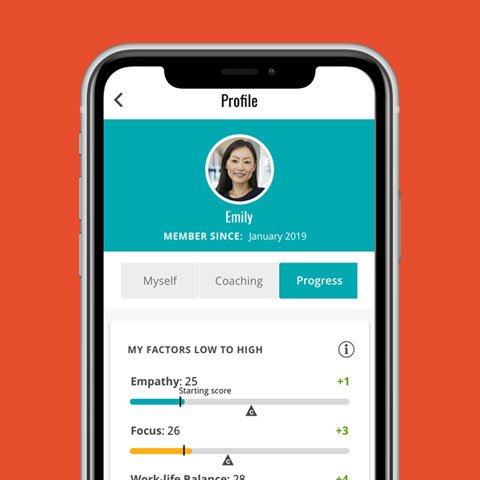I think it is safe to say workforce resilience is not only having a moment—the concept has finally come into its own. Managing suddenly includes new aspects of physical and psychological safety alongside new business models, new financial constructs, and the opportunity for what feels like a fresh start, where we’re beholden to fewer legacy approaches and policies than ever. It’s a time of change, and change and resilience are inseparable partners.
Gallup’s recent State of the Global Workforce put it front and center: “As employers rethink their workplaces in 2021, they have lessons to learn from 2020. Most importantly, leaders need to recognize the influence of employee well-being and employee engagement on workforce resilience.” HR analyst Josh Bersin saw it, too: “”Through all this change the #1 issue on the minds of CEOs is resilience.”
Business leaders work to stay ahead of workforce issues: helping our people be productive amidst a changing landscape of impediments. Resilience is not only about managing through adversity. Resilience allows people to summon the internal capacity to come through with a renewed sense of self-efficacy that actually motivates them to go even further. It allows organizations to come out of a defensive crouch and capitalize on new opportunities.
As CEO of a resilience training business, I got a firsthand view of how organizations were challenged beyond their imaginations, simultaneously adjusting supply chains, addressing HR policy to keep people safe and productive, devising new ways to meet their customers needs, adjusting benefits and policy to help people manage the strain of shifting social conditions, and communicating positivity to their people.
Some organizations were slow or unprepared and fell behind. But others demonstrated the flexibility to successfully adapt—and came out stronger. Among many examples, three stood out to me:
- One large manufacturer was able to switch its production line to make PPE and then return to making its usual products within months. Its employees had been trained in the basics of resilience—emotion control, empathy, self-efficacy, optimism—and were able to adjust to change and stay engaged.
Takeaway: Organizations that had previously elevated the importance of resilience and agility across the business and provided resilience training to the workforce had an advantage. They were able to adapt quickly to changed conditions.
- Based on extensive employee risk data, a life science company with many employees still in the lab acted swiftly to address burnout and immediately overhauled its company-wide PTO for employees. The data drove home to the C Suite that ‘yesterday’s’ PTO policies were an existential threat to their business.
Takeaway: Predictive risk data is a critical HR tool, allowing employers to identify the segments of their workforce most at risk for anxiety, depression and burnout and those who were prepared to face the challenges.
- An insurer with a history of support for well-being and resilience immediately amplified that support using Town Halls to reinforce the company’s commitment to supporting all employees. The message was clear: there would be flexibility to manage work and home life and well-being, and effective training to support their managers. As a result of this coordinated support they achieved a significant reduction in reported workforce stress.
Takeaway: Perceptions of employer support serve as a critical buffer against threats to employee well-being. Data confirms it: employees who felt well-supported by their employer had 90% better outcomes than those who didn’t.
With today’s challenges, the entire organization must have the agility and adaptive capacity essential to surviving and thriving. Cataloging the strengths, actions and mistakes of leading organizations reveals four aspects of resilience critical to organizational performance.
- Primary Preparedness
The entire workforce benefits from a better understanding of the essential skills of resilience: empathy, focus, problem solving, and self-confidence. These are the skills that optimize potential, enhance well-being, increase agility, and protect against burnout risk.
- Risk Detection and Intervention
The CDC has documented that 90% of our healthcare spend is on mental health related chronic conditions and stress-related disorders. A resilience assessment is a low-barrier, high-participation, private system that can let a user know he or she is at risk and steer them toward intervention. Ongoing engagement and reassessment builds on the opportunity.
- Cultural Commitment
Personally, as a leader, if I learned anything last year, I learned that culture and desired behaviors are mutually reinforcing—and that communication, trust and performance are a three legged stool. Beyond caring for the individual, leaders can take steps to bake this into our culture. Resilience can be part of every organization’s talent development strategy.
- Analytics and Insights
The kinds of analytics that are improving customer understanding and organizational productivity have a parallel in employee well-being and engagement. Organizations and leaders benefit from real-time predictive, pre-clinical analytics and insights that see trends and insights into employee mindset, helping leaders understand where they have wide-spread risk for resilience qualities including stress, change-readiness, and embracing growth.
The crisis underscored for leaders that workforce performance and well-being are interdependent and essential to managing through change and crisis. The complexity of the crisis—and its ongoing effects—highlighted the advantage of a sustained, systematic approach to ensure that every individual is capable of living and working at their best.

